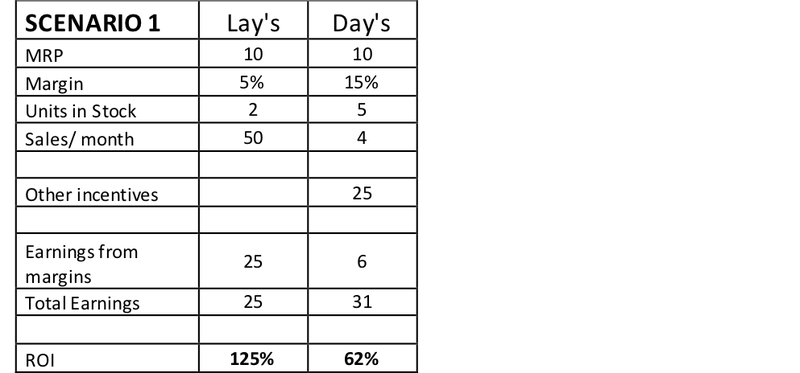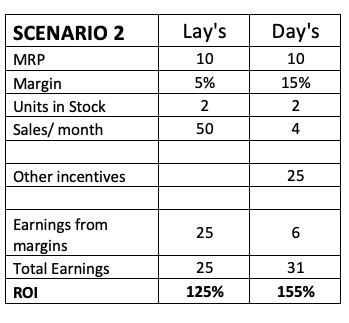How to set up a good sales and distribution system - Part-III

Everything you wanted to know about B2C (Business to consumer) Sales and Distribution but didn’t know whom to ask- Part 3.
Welcome to a three part series on how to set up a good and robust offline distribution system. Notice we the title said, “Sales & Distribution”, but the first line immediately shifts the focus to distribution.
Well, that’s our strong belief. Sales is an output. The distribution effort is the input. If you get the distribution effort right, sales will follow. A good salesman understands this. He is focused on building a robust distribution system, from where he can expect sustained, profitable sales.
In these blogs, we will share how a strong distribution system can be set up to boost your offline sales.
The entire Sales & Distribution machinery works on these key pillars:
- Capital
- Proper Dimensioning (i.e. resource allocation)
- Product story
Yes, we insist its this sequence. In the previous blogs, we discussed Capital and Proper Dimensioning. In this blog, lets discuss Product Story.
How does Product Story help a business?
A product story has two parts. The story that is told to get the product on the shelf. The Sell-in Story. And the story that is told to get the product of the shelf. The Sell Out story.
For most companies, this is done by the Marketing and the Sales teams together. While marketing creates the larger pull and awareness of a product to its customer base, the sales effort on the ground converts this into $$ for the distribution channel. The most important attribute which determines how closely and passionately the distribution channel will advocate this new product.
Lets look at this illustration.
A retailer (offline distribution channel) is trying to maximize real estate rents collected from brands. On his shop, he is hosting a range of products, with the “margin” on each product and its “rotation” giving him the rent from that brand. We have discussed margin and rotation in an earlier post
When a salesman goes with a new product to the retailer, the retailer is assessing the potential math around the new product. What’s the margin per unit of sale, and the number of units he expects to sell.
He balances this with the # units the salesman expects him to buy and stock (the investment). It always comes back to Return on Investment. Sounds familiar doesn’t it?
In a familiar category, the retailer is assessing whether the new brand can make a dent on its competitors. Eg: If he is able to sell 50 packets of Lays chips a month (and that’s the only brand in the market) , and a new brand called Days comes in; the retailer knows there is a potential sale of 4 units available. How much impact will Days make?
The salesman’s Sell In story now starts to look like:
- Lays gives you 5% margin, my brand Days gives you 15%. And Days is buying shelf space for INR 25 a month. Please accept 5 units. Pay me after 2 weeks.

The retailer knows his ROI from Lays is better. He DECLINES.
He puts a counter offer. All things remaining same, I will stock 2 units and order more.
Should the salesman accept this?
But the retailer now sees better ROI from Days.

This is the negotiation between the seller and buyer. About how the product makes him more money. For a B2B transaction, its always about the ROI.
Now the story has a second part. The Sell Out story. Can the retailer facilitate the sell out?
Lets say the seller agrees to place 2 units of stock. He takes a shelf for visibility. And marketing has created awareness and interest in the product. Now a consumer walks upto the shop. What can the retailer do?
A product sell out story allows the retailer to participate in the growth story of the product by speaking one or two lines about the product which convinces the consumer to try a new product.
- Days has lesser oils.
- Days has new flavours.
- Days is crispier.
However, these stories must be true, else the consumer will lose faith in the retailer and the brand.
An intelligent sales system, leaves 1 or 2 relevant & differentiated points with the retailer. Remember he has more than 300 brands stocked in his shop. At any time, he can try to push maybe 5-6 brands. For each he cant remember more than 1 or 2 facts about a new product.
Note: A good Sell Out story therefore address: What’s the easiest to remember. The most relevant. And the easiest to demonstrate.
A good salesman puts together the right Sell In and Sell Out stories when he takes his product into the market. Want to know more about how to do this consistently and correctly, meet us at GroCurv.
